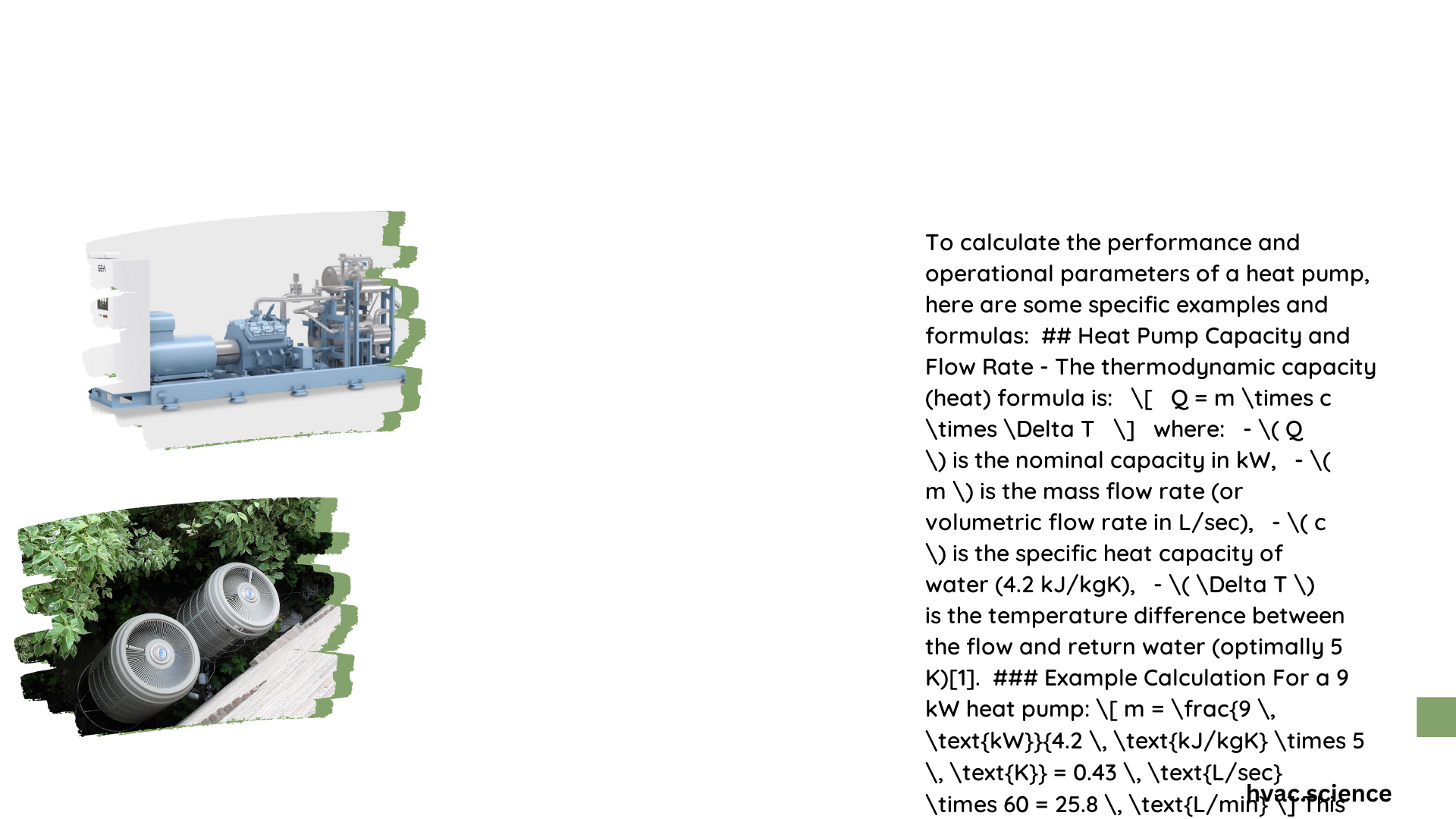Heat pump calculations are critical for understanding system efficiency and energy consumption. This comprehensive guide provides practical examples of calculating coefficient of performance (COP), energy efficiency ratio (EER), and seasonal performance metrics. Engineers and homeowners can leverage these mathematical approaches to evaluate heat pump performance, optimize energy usage, and make informed decisions about heating and cooling systems.
What Are Heat Pump Performance Metrics?
Heat pump performance can be evaluated through multiple mathematical metrics that quantify energy transfer and efficiency. These calculations help professionals and homeowners understand how effectively a heat pump converts electrical energy into heating or cooling capacity.
How to Calculate Coefficient of Performance (COP)?
The Coefficient of Performance (COP) represents the ratio of heat delivered to electrical power input. Here’s a detailed calculation method:
Formula:
[ \text{COP} = \frac{\text{Heat Delivered (Btu/h)}}{\text{Electric Power Input (W)}} ]
Example Calculation
Given Parameters:
– Heat Delivered: 48,000 Btu/h
– Electric Power Input: 1,200 W
Calculation Steps:
1. Divide heat delivered by electric power input
2. Convert units if necessary
[ \text{COP} = \frac{48,000 \, \text{Btu/h}}{1,200 \, \text{W}} = 40 ]
What Determines Energy Efficiency Ratio (EER)?
The Energy Efficiency Ratio measures cooling capacity relative to electrical power consumption.
Formula:
[ \text{EER} = \frac{\text{Cooling Capacity (Btu/h)}}{\text{Electric Power Input (W)}} ]
Practical Example
Parameters:
– Cooling Capacity: 48,000 Btu/h
– Electric Power Input: 1,200 W
[ \text{EER} = \frac{48,000 \, \text{Btu/h}}{1,200 \, \text{W}} = 40 ]
How to Estimate Heat Pump Load?
Heating Load Calculation
[ \text{Heating Load (Btu/h)} = \text{UA} \times \Delta T ]
Variables:
– UA: Overall heat transfer coefficient
– ΔT: Temperature difference
Cooling Load Estimation
[ \text{Cooling Load (Btu/h)} = \text{UA} \times \Delta T + \text{Internal Gains} ]
Performance Metrics Comparison Table
| Metric | Description | Typical Range |
|---|---|---|
| COP | Heat delivered per unit electricity | 3 – 5 |
| EER | Cooling capacity per unit electricity | 8 – 12 |
| SEER | Seasonal cooling efficiency | 13 – 22 |
| HSPF | Seasonal heating efficiency | 7 – 10 |
What Factors Impact Heat Pump Efficiency?
Several critical factors influence heat pump performance:
- Ambient temperature
- System design
- Insulation quality
- Refrigerant type
- Compressor efficiency
Energy Consumption Calculation Method
Daily Energy Consumption Calculation:
[ \text{Daily Energy (kWh)} = \frac{\text{Power Input (W)} \times \text{Operational Hours}}{1,000} ]
Example Scenario
- Power Input: 1,200 W
- Operational Hours: 8 hours
- Energy Cost: $0.15/kWh
[ \text{Daily Energy} = \frac{1,200 \times 8}{1,000} = 9.6 \, \text{kWh} ]
[ \text{Daily Cost} = 9.6 \, \text{kWh} \times \$0.15 = \$1.44 ]
Conclusion

Accurate heat pump calculations require understanding complex performance metrics and considering multiple variables. By applying these systematic approaches, professionals can optimize system design and energy efficiency.
